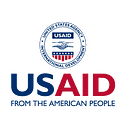CATALYZE partners unlocking private capital for low-income schools in Zambia
CATALYZE EduFinance is partnering with Opportunity International and a consortium of UBS, Promoting Equality in African Schools (PEAS) and Education Partnership Group (EPG) to improve access to and quality of non-state primary and secondary education for low- and lower-middle income learners in Zambia.
The Challenge
Access to education has increased significantly in Zambia over the past two decades, with primary net enrollment rates of 84% and primary completion rates of 72%, according to 2018 data. Despite these improvements, learning levels remain low across the country. Based on 2018 Early Grade Reading (EGRA) data, just 10% of students meet minimum reading proficiency levels by the end of Grade 2.[1] Zambia has recently joined the Program for International Student Assessment-Development (PISA-D). Initial data from the assessment found that 5% of 15-year-old test takers reach minimum reading proficiency, further demonstrating the need for improved education quality.[2] Research on learning outcomes of non-state schools in Zambia is limited. However, a 2012 SACMEQ assessment found that Grade 6 students in private institutions performed better in both reading and mathematics than their counterparts in government schools.[3]
Around 70% of the primary and secondary schools in Zambia are government-run, 27% are community schools, and just 3% are private schools. However, non-state education is growing in Zambia. The nearly 3,000 community schools throughout the country are primarily located in rural areas, to fill gaps from limited government schools. Limited capacity of government schools and rapid urbanization has also created demand for low-cost non-state schools in urban and peri-urban areas, including among low-income households.
Many Zambians do not have access to financial services, either due to the lack of suitable products for their income bracket or a lack of physical and digital access. Around 55% of the population lives in rural areas and are largely underserved by the formal financial sector. Nearly 38% of Zambians rely on informal financial services, highlighting the need for further development of financial infrastructure. In particular, financial services in Zambia lack innovative products for both households and SMEs, including educational institutions, which are critical to expand access to finance and to enhancing economic development.
The market for education financing in Zambia presents some challenges for financial intermediaries. However, there are opportunities for microfinance institutions and small business lenders to support education programs through financing, and to use lending as an entry point for improved education quality. Non-state schools face numerous obstacles, including changes to policies and difficulties in registration and licensing.
Our Approach
CATALYZE EduFinance is partnering with Opportunity International (OI) in Zambia to increase the provision and demand for quality education in Zambia. In particular, OI will focus on locally owned, non-state primary schools that serve low- and lower-middle income households. OI aims to mobilize US$9.38 million in private investments over a period of four years, through four financial institution partners and at least 605 school loans to low-fee non-state schools. In tandem, OI is working to improve education quality in at least 108 schools. Quality enhancement activities include professional development for teachers and school leaders as well as the creation of school development plans through the Pathways to Excellence program.
Further, CATALYZE EduFinance is collaborating with a consortium of UBS Optimus Foundation, PEAS and Education Partnership Group (EPG) to develop both demand- and supply-side interventions in Zambia over a five-year period.
EPG will address demand-side challenges by working with the government at a system level and supporting the Ministry of General Education in Zambia to review, prioritize and develop a comprehensive policy and regulatory environment for non-state primary education providers. To achieve project aims, EPG will work across three interventions to strengthen accountability in education service delivery for both state and non-state schools; support the Ministry to enhance quality assurance and instructional oversight; and expand access to primary school-aged children through tailored policy recommendations.
On the supply-side, PEAS will expand access to quality non-state education through an innovative public-private partnership model. Building on an already established network of four schools in Zambia, run in partnership with the government, PEAS will expand to 11 schools. The schools will increase access to quality education and improve learning outcomes for low-income students and underserved communities. In addition, PEAS will provide technical assistance to primary schools in low-income communities through a hub and spoke model that targets improved learning outcomes.
[1] https://pdf.usaid.gov/pdf_docs/PA00TZM9.pdf
[2] PISA-D Reveals Exceptionally Low Learning, January 2019. Research on Improving Systems of Education. The six other countries are Cambodia, Ecuador, Guatemala, Honduras, Paraguay and Senegal.
[3] World Bank SABER: Zambia Country Report http://wbgfiles.worldbank.org/documents/hdn/ed/saber/supporting_doc/CountryReports/EPS/SABER_EPS_Zambia_Country_Report.pdf
